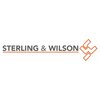
i
Steer Engineering
Filter interviews by
Steer Engineering Audit Specialist Interview Questions and Answers
Be the first one to contribute and help others!
Interview questions from similar companies

I applied via Job Portal and was interviewed in May 2024. There was 1 interview round.
(2 Questions)
- Q1. Stress strain curves
- Q2. Asme codes for oil and gas
- Ans.
ASME codes are widely used in the oil and gas industry to ensure safety and quality standards are met.
ASME B31.3 is the code for process piping in oil and gas facilities
ASME Section VIII is used for pressure vessels in oil and gas industry
ASME B31.4 is for liquid pipelines in oil and gas industry

Interview Questionnaire
1 Question
- Q1. Tell me about the project in your resume and your role in it
Interview Preparation Tips

Senior Analyst Interview Questions & Answers
Oceaneering Internationalposted on 3 Jun 2020
I applied via Naukri.com and was interviewed in Dec 2019. There were 3 interview rounds.
Interview Questionnaire
4 Questions
- Q1. Question relating to my past experience.
- Q2. Working process of my last organization.
- Ans.
In my last organization, the working process involved cross-functional collaboration, data analysis, and regular reporting to management.
Regular team meetings to discuss project progress
Collaboration with different departments to gather data and insights
Utilization of data analysis tools to identify trends and patterns
Creation of detailed reports for management review
Implementation of feedback and adjustments based on
- Q3. Emphasised on Why I am looking for changed?
- Ans.
Seeking new challenges and growth opportunities
Looking to expand my skill set and knowledge
Interested in taking on more responsibility
Seeking a more dynamic work environment
Want to work with a diverse team and learn from different perspectives
- Q4. Situational questions relating to the process.
Interview Preparation Tips


(3 Questions)
- Q1. What is orifice std and types of taps
- Ans.
Orifice std refers to standard orifice sizes used in engineering. Types of taps include flange taps, corner taps, and D and D/2 taps.
Orifice std refers to standard sizes of orifices used in flow measurement
Types of taps include flange taps, corner taps, and D and D/2 taps
Flange taps are used for large pipes, corner taps for small pipes, and D and D/2 taps for general applications
- Q2. What is pressure gauge operating range
- Ans.
Pressure gauge operating range refers to the minimum and maximum pressure values that the gauge can accurately measure.
Pressure gauge operating range is typically specified by the manufacturer.
It is important to ensure that the pressure being measured falls within the gauge's operating range to ensure accurate readings.
For example, a pressure gauge with an operating range of 0-100 psi should not be used to measure pres
- Q3. What is straight length requirements for orifice flow element
- Ans.
Straight length requirements for orifice flow element ensure accurate measurement by allowing flow to stabilize before reaching the element.
Straight length requirements typically range from 10 to 44 pipe diameters upstream and 5 to 22 pipe diameters downstream of the orifice.
These requirements help prevent flow disturbances and ensure accurate measurement of flow rate.
For example, if the pipe diameter is 4 inches, the ...
(3 Questions)
- Q1. Salary expectations and current ctc
- Q2. Describe about yourself and other information
- Q3. Why we should hire you and other similar questions.
Interview Preparation Tips

I applied via Walk-in and was interviewed before Jul 2020. There were 4 interview rounds.
Interview Questionnaire
1 Question
- Q1. Education and previous work details
Interview Preparation Tips

I applied via Walk-in
About your job, location, CTC
(2 Questions)
- Q1. Gdjjdnksnd shgxkdjx vhkdkxnx
- Q2. Years of experience & expectex salary facility provided by company
Interview Preparation Tips

I applied via Walk-in and was interviewed in Apr 2023. There were 2 interview rounds.

(3 Questions)
- Q1. What is the construction procedure
- Ans.
Construction procedure involves planning, designing, obtaining permits, site preparation, foundation construction, framing, finishing, and inspections.
Planning and designing the project
Obtaining necessary permits
Site preparation and excavation
Foundation construction
Framing and structural work
Installation of utilities and systems
Finishing touches such as painting and flooring
Final inspections and approvals
- Q2. What's is the beam lapping position
- Ans.
Beam lapping position refers to the location where two beams overlap or intersect in a structural element.
Beam lapping position is important for ensuring structural integrity and load-bearing capacity.
Common beam lapping positions include end-to-end, side-by-side, and staggered lapping.
Proper beam lapping position is determined by engineering calculations and design specifications.
- Q3. What is the tile procedure
- Ans.
The tile procedure is a method used in computer graphics to fill a region with a repeating pattern or image.
The tile procedure involves dividing the region into smaller tiles and filling each tile with the desired pattern or image.
It is commonly used in graphic design software to create seamless textures or backgrounds.
The size and shape of the tiles can be adjusted to achieve different visual effects.
Examples of tile ...

Assistant Manager Interview Questions & Answers
Ramky Infrastructureposted on 22 Oct 2024
I applied via Referral and was interviewed before Oct 2023. There was 1 interview round.
(2 Questions)
- Q1. Rate analysis for building Items
- Ans.
Rate analysis for building items involves calculating the cost of materials, labor, and overhead for each item in a construction project.
Rate analysis helps in determining the cost of each building item based on material and labor costs.
It involves breaking down the total cost into components like material cost, labor cost, and overhead expenses.
Rate analysis helps in estimating the total project cost accurately.
For ex...
- Q2. Material Rates of building materials
- Ans.
Material rates of building materials vary based on factors like location, quality, and demand.
Material rates can vary based on the location of the construction site.
The quality of the building materials can also impact the rates.
Demand for certain materials can cause fluctuations in prices.
For example, the rate of cement in urban areas may be higher compared to rural areas.
Higher quality bricks may cost more than lower...

(3 Questions)
- Q1. Tell me about yourself
- Q2. How will you fit in our company
- Q3. Are you a good fit or are you not
(2 Questions)
- Q1. Are you a good fit or not
- Q2. You are a good fit or not
Interview Preparation Tips

Assistant Manager Interview Questions & Answers
Ramky Infrastructureposted on 21 Feb 2022
(2 Questions)
- Q1. What is your experience
- Ans.
I have 5 years of experience in management roles, including 2 years as an Assistant Manager.
5 years of management experience
2 years as an Assistant Manager
Successfully led a team of 10 employees
Implemented new strategies to improve productivity and efficiency
Trained and mentored new employees
- Q2. What is the thickness of subgrade
- Ans.
The thickness of subgrade varies depending on the type of construction and soil conditions.
The thickness of subgrade is determined based on the load-bearing capacity required for the structure.
It is typically measured in inches or centimeters.
For example, in road construction, the subgrade thickness can range from 6 to 12 inches.
In building construction, it may vary from a few inches to several feet depending on the bu
Interview Preparation Tips
Tell us how to improve this page.
Steer Engineering Interviews By Designations
- Steer Engineering Design Engineer Interview Questions
- Steer Engineering Research Trainee Interview Questions
- Steer Engineering Business Head Interview Questions
- Steer Engineering Junior Mechanical Engineer Interview Questions
- Steer Engineering Business Analyst Interview Questions
- Steer Engineering Design Engineer II Interview Questions
- Steer Engineering Senior Manager Interview Questions
- Steer Engineering Technical Service Engineer Interview Questions
- Show more
Interview Questions for Popular Designations
Interview Questions from Similar Companies
|
Design Engineer
53
salaries
| ₹2.4 L/yr - ₹6.8 L/yr |
|
Assistant Manager
23
salaries
| ₹6.5 L/yr - ₹12 L/yr |
|
Junior Engineer
22
salaries
| ₹2 L/yr - ₹3.8 L/yr |
|
Quality Engineer
17
salaries
| ₹2.5 L/yr - ₹4.1 L/yr |
|
Deputy Manager
17
salaries
| ₹8.6 L/yr - ₹11.2 L/yr |

Sterling & Wilson

Nasser S. Al Hajri Corporation

Ramky Infrastructure

L & W Constructions
- Home >
- Interviews >
- Steer Engineering Interview Questions >
- Steer Engineering Audit Specialist Interview Questions










